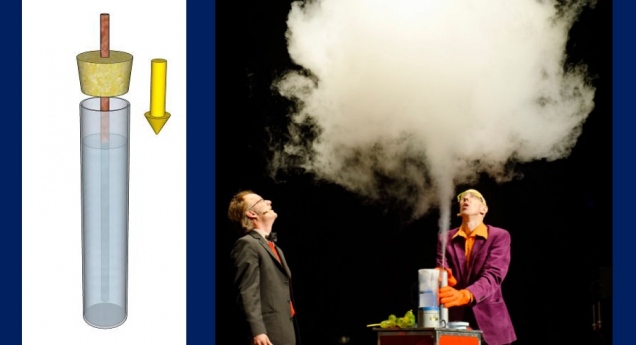How does it work?
Liquid nitrogen has a temperature of minus 196°C. When exposed to normal room temperature, it becomes a gas. The volume of nitrogen as a gas is around 700 times greater than the same mass of nitrogen in liquid form.
In the cylinder, the nitrogen at the cylinder walls and in the copper pipe immediately turns to gas, creating very high pressure inside. This forces the nitrogen out of the narrow tube at high velocity. The cold nitrogen cools the air around it when it is released, condensing the moisture in the air to form a visible white cloud. There is nothing else so special about clouds; they are formed simply by the cooling of the moisture in the air.





























































































